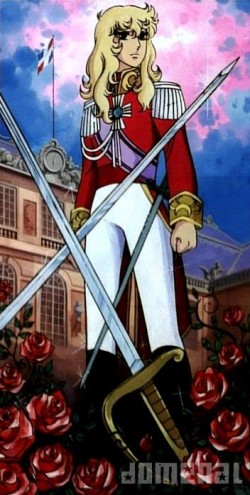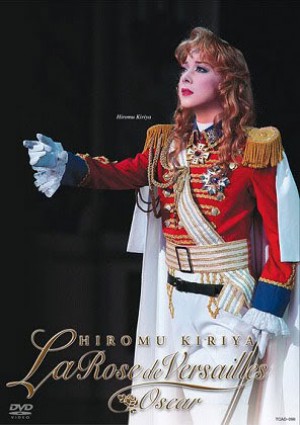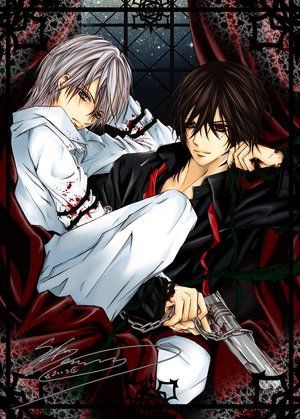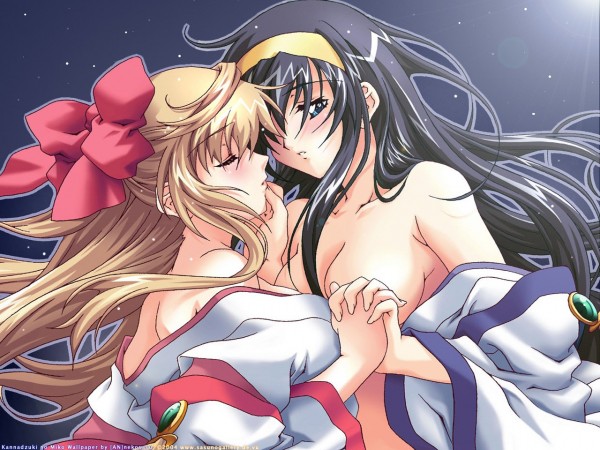Yaoi and yuri refer to Japanese homoerotic manga (comic books). Yaoi features attractive and feminine-looking boys engaged in same-sex romance, and yuri has stories about love between women. Both genres have a mostly female fan base, and they present Gay-related themes that appeal to more than the LGBTQ community.
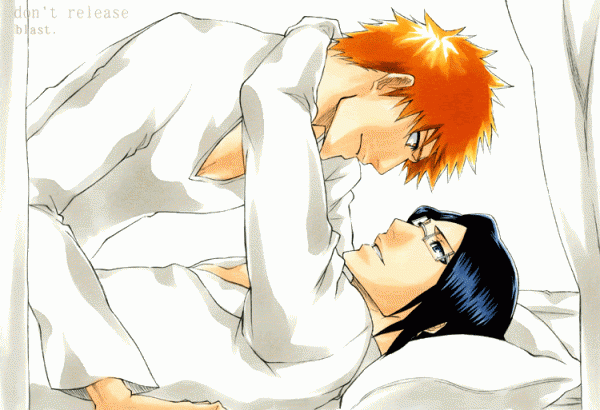
Yaoi of two characters from the popular Bleach anime series (fanpop.com/clubs/bleach-yaoi/images/13550114/title/bleach-yaoi-photo, January 2013)
History: Manga
In the late 1970s and early 1980s, the manga and anime (animated cartoon) industry in Japan offered many different genres for a variety of age groups. For teenagers, shonen manga was for boys and shojo manga for girls. In shojo manga, the male protagonist was often a bishonen (Japanese: “beautiful boy”), an androgynous and sexually ambiguous figure that attracted the gaze of both sexes. Love between beautiful boys tended to be platonic, and their femininity provided girls and young women an outlet to escape from heteronormal restrictions on gender expression.
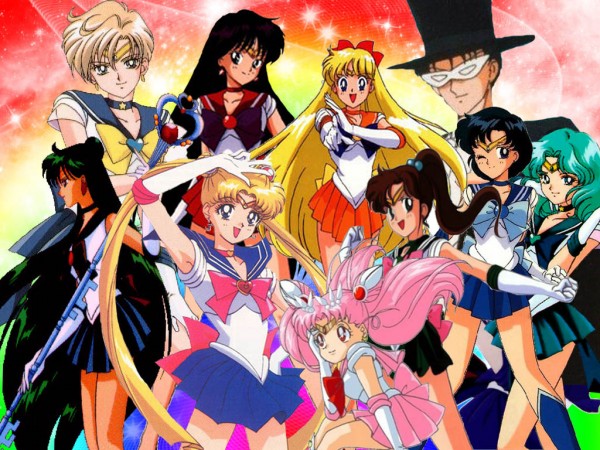
Characters from the shojo manga, Sailor Moon (vietnamonline.com/event/women-and-manga-exhibition-in-hanoi-this-march.html, January 2013)
Beautiful Boys, Takarazuka Revue, and Yaoi
Attraction to bishonen in girls’ shojo manga is similar to the popularity of otokoyaku (a female actor playing a male character) in the all-female company, the Takarazuka Revue, who is often shown as a beautiful boy.
Images of beautiful effeminate boys in manga and in the Takarazuka Revue (both for the pleasure of primarily female audiences) challenge traditional gender stereotypes and expectations. In the 1970s, the popular shojo manga, The Rose of Versailles, told the story of a French girl, Oscar, disguised as a boy so that she could inherit the position of an imperial guard during the French Revolution. As a boy, Oscar fell in love with her male colleague, Andre, and began a homoerotic romance.
The story has been performed on the Takarazuka stage.
Bishonen in the shojo manga were also imitated by dojinshi (amateur manga) artists. However, dojinshi manga often contained no plots. Consequently, they were called YAOI, an abbreviation of a Japanese three-word phrase: YAmanashi (no climax), Ochinashi (no punch line), and Iminashi (no meaning). As with shojo manga, the audience was still primarily female.
Because of homoerotic relationships in dojinshi/yaoi manga, the acronym “yaoi” was extended in meaning to the love between boys in general. In 1975, dojinshi manga were sold in the first Tokyo Comic Market, which later became an important comic event in Japan.
Yaoi developed into its own comics genre, and its style changed gradually. In the first stage (the late 1970s to the mid-1980s), it explored men’s sexuality, especially male-male bonding. In the second stage (the mid-1980s to the early 1990s), the focus shifted to the ideal human relationships between individuals. In the third stage (the early 1990s onward), yaoi often contained male homosexual relations and sexual violence. According to the sponsor of the Tokyo Comic Markets in 1997, nearly 70 percent of dojinshi manga were associated with yaoi themes.
Yuri
The term yuri literally means “lily” in Japanese, and it was coined to indicate lesbian love in 1976. This code word was from the personal advertisement section, “Yuri Tsushin” (“Lily Communication”), in the Lesbian magazine, Allan. Yuri was used in contrast with bara (Japanese: “rose”) in Barasoku, a Gay male magazine. Yuri relationships first emerged in shojo manga without being overtly sexual. However, in dojinshi manga, yuri was overtly portrayed as sexual relationships between women.
Although the subject might appeal to some heterosexual male readers, most readers tend to be young female adults. Most dojinshi and yaoi titles would be categorized as josei (Japanese: “female”) manga, an adult version of shojo manga.
– Chen Yilin
QEGF Authors and Articles
QEGF Introduction
Comments? Post them on our Encyclopedia facebook page.
Further Reading:
Brenner, Robin E. Understanding Manga and Anime. Westport: Libraries Unlimited, 2007.
Gravett, Paul. Manga: Sixty Years of Japanese Comics. London: Collins Design, 2004.
Robertson, Jennifer. Takarazuka: Sexual Politics and Popular Culture in Modern Japan. California: University of California, 1998.
Suzuki Kazuko. “Pornography or Therapy? Japanese Girls Creating Yaoi Phenomenon” in Millennium Girls. Ed. Sherrie Inness. London: Roman and Littlefield, 1998.
Welker, James. “Lilies of the Margin: Beautiful Boys and Queer Female Identities in Japan” in AsiaPacificQueer: Rethinking Genders and Sexualities, ed. by Fran Martin, University of Illinois. 2003.

